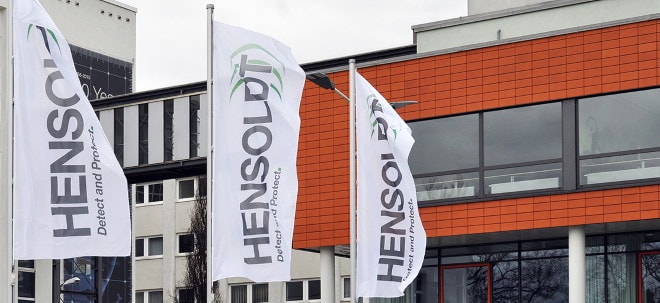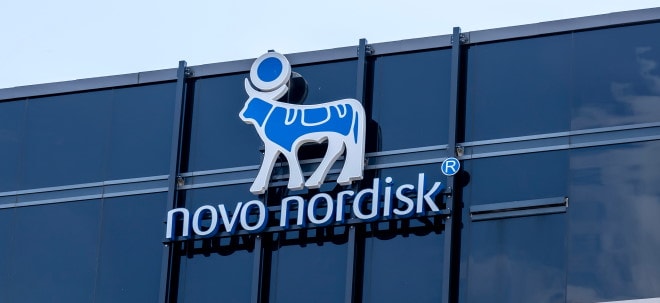Alcoholic Beverages Industry to Reach USD 2.2T by 2030 as Premiumization and Policy Shifts Drive Growth, Says Mordor Intelligence
HYDERABAD, India, Oct. 2, 2025 /PRNewswire/ -- According to a new report by Mordor Intelligence, the global alcoholic beverages industry is set to grow from USD 1.83 trillion in 2025 to USD 2.2 trillion by 2030, at a CAGR of 3.57%, driven by premiumization, policy liberalization, and evolving consumption habits. A post-COVID rebound in international tourism, generating over USD 1.6 trillion in visitor receipts last year, has reignited on-premises demand in hotels, restaurants, and resorts globally. The alcoholic beverages market growth is driven by rising consumer preference for low- and no-alcohol products, growing tourism and hospitality activities, product differentiation in packaging and alcohol content, and an expanding social drinking culture. These factors are collectively shaping the market's evolution across both established and emerging regions.
Market Shifts and Emerging Narrative
Premiumization remains the central narrative shaping the alcoholic beverages market. Global players are pruning low-margin portfolios to focus on upscale products, while regional distillers scale craft offerings to capture rising middle-class spending. In Asia-Pacific, where a growing middle class drives consumption of spirits, beer, wine, and craft spirits, omnichannel distribution models are widening their reach. Online sales, subscription models, and grocery tie-ins have transformed purchasing behavior, blending convenience with lifestyle-driven discovery.
At the same time, sustainability is moving from a marketing add-on to a business imperative. Producers are investing in recyclable aluminum cans, eco-friendly closures, and water-positive distilleries to win environmentally conscious consumers. Innovations such as paper-based liquor bottles and smart packaging demonstrate how differentiation increasingly relies on both form and function.
Industry Landscape Breakdown
Tourism plays a powerful multiplier effect across the alcoholic beverages market. As destinations emphasize culinary and cultural experiences, demand for premium local labels has surged. Souvenir purchases, duty-free corridors, and collaborations with airlines and hotels are embedding regional identity into global consumption.
The rise of low- and non-alcoholic beverages highlights another structural shift. With the World Health Organization linking alcohol to millions of preventable deaths annually, public health concerns are driving consumer and regulatory momentum. From Ireland's mandatory cancer warning labels to the U.S. Surgeon General's warnings on cancer risks, stricter frameworks are reshaping product innovation. Leading companies like Constellation Brands and Diageo are investing heavily in non-alcoholic and low-ABV portfolios to tap into a broader base without cannibalizing traditional sales.
Digital influence is equally transformative. Platforms such as Douyin in China are reshaping drinking culture by merging lifestyle content with mixology trends, making alcoholic beverages more accessible to younger consumers. In the Middle East, policy changes in Saudi Arabia to permit licensed outlets reflect a dramatic departure from prohibition-era restrictions, creating new market frontiers in the Gulf.
Regional Insights and Growth Hotspots
The Middle East and Africa stand out as the most dynamic growth hotspots. Saudi Arabia's upcoming licensing framework is expected to approve 600 outlets by 2026, unlocking unprecedented opportunities for international producers and local joint ventures. The United Arab Emirates continues to serve as a re-export hub, funneling premium spirits across the GCC, while South African wineries leverage duty-free trade to offset domestic challenges.
North America and Europe maintain maturity but remain lucrative markets. Premiumization trends, craft provenance, and functional low-ABV variants drive incremental growth. Europe's tightening regulations, from health warnings to sustainability mandates, are pushing producers to balance compliance with innovation. Meanwhile, South America reflects mixed signals premium spirits market in Brazil holds steady, but inflationary headwinds in Argentina and Colombia challenge discretionary spending.
Companies Defining the Competitive Edge
The competitive landscape is defined by a blend of consolidation and innovation. Diageo's acquisition of Ritual Zero Proof in 2024 underscored a growing focus on non-alcoholic spirits, while Anheuser-Busch InBev and Heineken continue to scale omnichannel distribution and functional product innovations. Constellation Brands' stake in non-alcoholic start-up Hiyo signals how incumbents are proactively diversifying to align with consumer health trends.
Tech adoption is another driver. AccelPay's 2025 acquisition of Cask & Barrel Club reflects how digital platforms are transforming alcohol commerce. From subscription clubs to direct-to-consumer channels, technology is helping smaller producers bypass traditional distribution bottlenecks.
Packaging innovation also sets leaders apart. Diageo's paper-based Bailey's prototype and smart NFC-enabled closures illustrate how brands blend sustainability, authenticity, and customer engagement in a single bottle.
To read more about the trends driving the alcoholic beverages market growth, visit:https://www.mordorintelligence.com/industry-reports/alcoholic-beverages-market?utm_source=prnewswire
Alcoholic Beverages Industry Segmentation
By Product Type
- Beer
- Ale Beer
- Lager
- Non/Low-Alcohol Beer
- Other Beer Types
- Wine
- Fortified Wine
- Still Wine
- Sparkling Wine
- Other Wine Types
- Spirits
- Brandy and Cognac
- Liqueur
- Rum
- Tequilla and Mezcel
- Whiskies
- White Spirits
- Other Spirit Types
By End User
- Male
- Female
By Packaging Type
- Bottles
- Cans
- Others
By Distribution Channel
- On-Trade
- Off-Trade
- Specialty/Liquor Stores
- Others Off-Trade Channels
Related Reports
Ready To Drink Beverages Market - The Ready-To-Drink (RTD) Beverages Market is segmented by Product Type (Tea, Coffee, Energy Drinks, and more), Ingredient (Conventional, Natural, and Organic), Packaging (PET/Glass Bottles, Tetra Packs, Cans, and other types), Distribution Channel (On-Trade and Off-Trade), and Geography (North America, Europe, Asia-Pacific). The market, valued at USD 380 billion in 2025, is projected to reach USD 482 billion by 2030, growing at a steady CAGR of 4.8%, with forecasts provided in terms of value (USD).
https://www.mordorintelligence.com/industry-reports/ready-to-drinks-beverages-market?utm_source=prnewswire
Alcohol Packaging Market - The Global Alcoholic Drinks Packaging Market is segmented by Material (Plastic, Paper, Metal, and Glass), Package Type (Bottles, Metal Cans, Cartons, and Pouches), Product (Beer, Spirits, Wine, and Other Products), and Geography (North America, Asia-Pacific, Europe, the Middle East & Africa, and South America). The market is projected to grow steadily, registering a CAGR of 5.1% during the forecast period, with sizes and forecasts provided in terms of value (USD million) across all segments.
Beverage Packaging Market - The Beverage Packaging Market is segmented by Material Type (Plastic, Metal, Glass, and Paperboard), Product Type (Bottles, Cans, Pouches, Cartons, and Beer Kegs), Packaging Format (Aseptic, Hot-Fill, Cold-Fill/Carbonated and Retort able), Beverage Type (Carbonated Drinks, Alcoholic Beverages, Bottled Water and Milk), and Geography. The market, valued at USD 163 billion in 2025, is projected to reach USD 200 billion by 2030, expanding at a CAGR of 4.1%, with forecasts provided in terms of value (USD).
https://www.mordorintelligence.com/industry-reports/beverage-packaging-market?utm_source=prnewswire
Carbonated Soft Drinks Market - The Carbonated Soft Drinks Market is segmented by Soft Drink Type (Diet Cola, Fruit-Flavored Carbonates, Standard Cola, Other Types), Packaging Type (Disposable Cups, Glass Bottles, Metal Cans, PET Bottles), Distribution Channel (Off-trade, On-trade), and Region (Africa, Asia-Pacific, Europe, Middle East, North America, South America). The market, valued at USD 358 billion in 2025, is projected to reach USD 453 billion by 2030, expanding at a CAGR of 4.8% during the forecast period.
About Mordor Intelligence:
Mordor Intelligence is a trusted partner for businesses seeking comprehensive and actionable market intelligence. Our global reach, expert team, and tailored solutions empower organizations and individuals to make informed decisions, navigate complex markets, and achieve their strategic goals.
With a team of over 550 domain experts and on-ground specialists spanning 150+ countries, Mordor Intelligence possesses a unique understanding of the global business landscape. This expertise translates into comprehensive syndicated and custom research reports covering a wide spectrum of industries, including aerospace & defense, agriculture, animal nutrition and wellness, automation, automotive, chemicals & materials, consumer goods & services, electronics, energy & power, financial services, food & beverages, healthcare, hospitality & tourism, information & communications technology, investment opportunities, and logistics.
For media inquiries or further information, please contact:
media@mordorintelligence.com
Mordor Intelligence Private Limited
https://www.mordorintelligence.com/
Logo - https://mma.prnewswire.com/media/2746908/5541968/Mordor_Intelligence_Logo.jpg
![]() View original content to download multimedia:https://www.prnewswire.co.uk/news-releases/alcoholic-beverages-industry-to-reach-usd-2-2t-by-2030-as-premiumization-and-policy-shifts-drive-growth-says-mordor-intelligence-302573091.html
View original content to download multimedia:https://www.prnewswire.co.uk/news-releases/alcoholic-beverages-industry-to-reach-usd-2-2t-by-2030-as-premiumization-and-policy-shifts-drive-growth-says-mordor-intelligence-302573091.html


